Consolidated Catalina, FP273, Lough Gill, Sligo, November 1942
On the 17th November the tranquility of a north Sligo lake was
broken by the arrival of a British flying boat. Lough Gill is
located to the east of Sligo town and the lake drains in to the
town and out to the Atlantic via the Garavogue River.
The diary of the Royal Air Force Ferry Command station at Gander, contained the following entries for a Catalina flying boat that was making the dangerous crossing of the South Atlantic that week:
Tuesday, 17th November 1942
Delivery Catalina FP273, left Bermuda 1536, 16 Nov, due
Greenock 1347, 17th Nov missing. Aircraft and ships
searching.
Thursday, 19th November 1942
Missing Catalina FP273 (Bermuda to Greenock) located at Lough
Gill, Eire,. Expected to arrive at Lough Erne today.
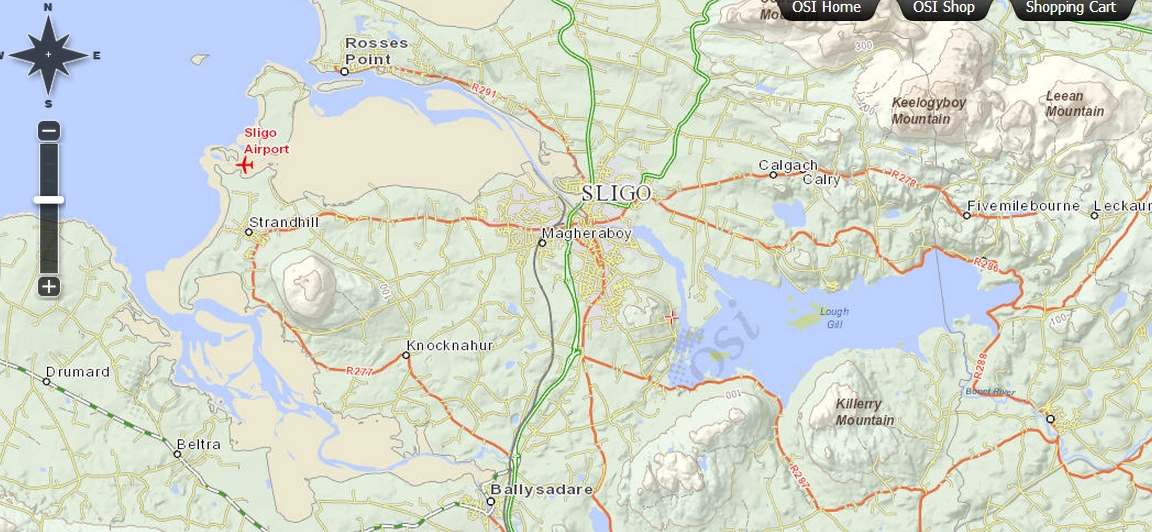
At around 16:25 on the evening of the 17th, a flying boat made
a landing on the lake and the crew made contact with local
people and authorities. It was found to have a crew of six on
board. They reported that they were on a delivery flight from
Bermuda to Scotland when they began to ran short of fuel. The
crew were accommodated locally that night, four of the men
staying at Hazelwood House while to remaining two stayed
overnight onboard the aircraft. Hazelwood house was around this
time unoccupied and was being used by the Irish Army as a
billet. The crew members names were recorded by the military
officers who attended the scene but this has allowed the
identification of only three of the men due to the way the the
names were recorded or through inability to find matching names
in the wartime records.
Between the records held by the Irish Military Archives in
Rathmines and the National Archives in Dublin, City Centre, the
crew names can be found to be recorded as:
Captain G A Herson (Civilian)
First officer (Co-pilot) P/O A G Buchanan RAF
1st Radio Officer T J Howard US War Department Civilian
2nd Radio Officer C Push or Fuchs or Fushs US War Department
Civilian
Navigator Sgt G Cantley Canadian Air Force
Flight Engineer Sgt P Barter or Darter RAF
The Irish Authorities contacted their counterparts in Northern
Ireland after determining that the aircraft was on a non combat
mission and that the airmen should be released. The RAF in
Northern Ireland arranged for fuel to be sent to be sent across
the border and the big Catalina flying boat was refueled on the
lake. With the aircraft and its crew replenished, the aircraft
took off again from the lake at 16:41 the following day.
The following photo of a Catalina appeared in Donal McCarron's
book, Landfall Ireland and his research records indicate that it
came from a local Sligo source.
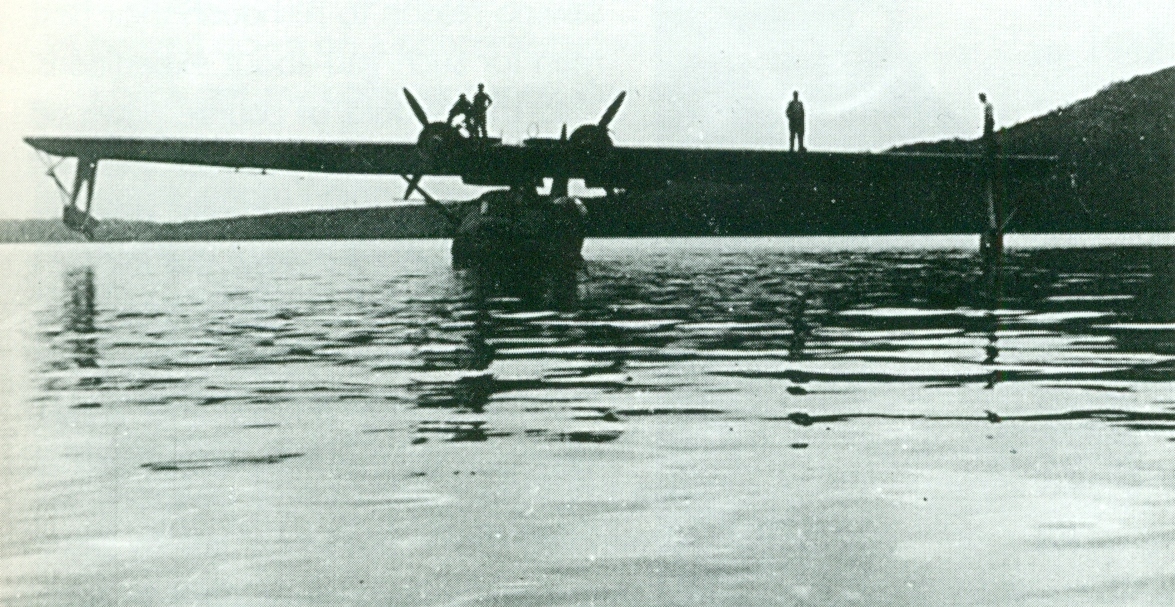
The scan comes from a blog post by Terence O’Reilly which quotes
the following from former Lt Owen Quinn in an article titled "On
a Wing and a Prayer" published in the Irish Army magazine, An
Cosantóir in September 1968. It is interesting as its
contains clues to the identity of two of the crew members as
'Tony Baxter' and 'Mr Fuchs'.
The steak was tender and thick. So
were the onions. Only Trooper Conway could have salvaged
such a morsel from the Officers’ kitchen. Late for the meal
as usual, I sat in splendid isolation beside a Georgian
kitchen range and lashed into the drum-up. Sgt. Fitzgerald
stuck his impish grin through the kitchen door:” Plane
circling overhead, Sir,” he announced, “Catalina by the
looks of her.” This was sheer impertinence-or maybe keen
observation, coming from a Cavalry Sergeant to a
Coastwatching Second Lieutenant. Fitz had been studying the
aircraft identity silhouettes which covered some of the damp
spots on the Orderly Room wall of Hazelwood House, Sligo.
He was right. It was a Catalina flying boat and she
spoiled my steak, for she had no business circling
dangerously over a heavily wooded area. By the time I was
astride my M.20 the Catalina had dropped out of sight
through the trees and Lieut. Murphy (Cavalry) was ten
lengths ahead of me on his M.20 heading for Lough Gill. But
local knowledge is the essence of the problem; Spud overshot
the boreen and I cut inside him, arriving on the lakeside
cobbles with sufficient headway to claim the salvage, and
save my face. The Catalina had touched down and was now
miraculously sailing like one of Willy Yeats’s swans in the
lee of his Isle of Inisfree. Miracle is no understatement
because that Yankee pilot put her down on the only half mile
of open water in the lake. Like a deus-ex-machina from a
Greek play, one of the Sligo Gallaghers appeared in a
rowboat.
” You are under contract,” says I without waiting to
contact S4, “row me out to the flying- boat.”
We took Spud aboard just to show there were no hard
feelings, and we were only a few cable– lengths ahead of an
outboard launch manned (and womaned) by the Red Cross from
Dromahair. There were six people aboard the flying boat,
looking a bit shook, but not a feather out of any of them.
Five of them came ashore but the Skipper would not
budge-must stay with his ship. We knew he was carrying the
current top secret equipment, a Norden bombsight. but he
couldn’t know that we knew” and he had to keep his secret.
The aircraft guns were sealed in protective tapes -a point
which the Skipper made clear before we took the five into
protective custody.
We left the Skipper to the tender mercies of the
Dromahair Red Cross who were last seen following a Christmas
hamper into the bowels of the Catalina. We made our
landfall on the isthmus of Hazelwood and were welcomed by
Captain Pat Cahalane, OC Cyclists, and current incumbent in
the Hazelwood living. I can only remember the names of three
of the five, Lt. Buchanan, R.A.F.; Flight Sgt. Tony Baxter,
R.A.F., and an American civilian whose name I could not
spell. He spelled it out F-U-C, and I winced as I waited for
the H-S. We proceeded in Capt. Cahalane’s bug-chaser
but not before the unnamed Texan knelt down, literally
kissed the sacred soil of Sligo and plucked a small green
plant.”Is this a shamrock?” asked he, and I cast a botanical
eye on it and said “No, it is a four- leafed Clover” and so
Tinpan Alley was in business.
On arrival at Hazelwood I phoned my headquarters at
Castlebar, and was kicked-to-touch to Athlone where
everything else stopped. “We will phone you back,” said the
anonymous voice and I put up the receiver which bounced back
from Dublin. I outlined the Facts. ” We will phone you
back,” came the familiar echo, and the Sligo exchange began
to develop earache. The next call was from Western Command
Headquarters. ” May we take your men into Sligo for a meal,”
I asked the Power-That-Was, for Troopers Conway and Ryan had
exhausted their foraging prowess with the steak.” You
must stay with them,” came the warning voice from Athlone.
“Two of them are in uniform,” said I. ” They can’t go,”
said the voice. So we fitted Lt. Buchanan and Sgt. Baxter
out with sweaters and sports coats, and headed for Noone’s
pub in Wine St. where we knew we would be secure. Mine host
did us well as he phoned the Grand Hotel and ordered
victuals for five shipwrecked mariners. On arrival at the
Grand we found all Sligo had anticipated us, or so it seemed
from the clamour in the bar where everyone wanted to
buy a round for the house. A judge, who was on circuit at
the time, saved the situation by sending down his card from
his chambers upstairs and ordering the castaways to take
audience of him, on the plea that the Yanks had given him
one hell of a swell do when last he crossed the Herring
Pond.
In the meantime we gleaned the cause of the forced
landing. Some discrepancy in the navigational instruments
had caused the navigator to zig-zag along his directional
beam (to somewhere in Scotland). As a result they had to
call on emergency fuel tanks but the pump was kaput. Faced
with the prospect of touching dawn on a foul shore off Easky
they made a last desperate effort to make Lough Erne.
Shortage of fuel forced them down on Lough Gill.
Meantime we had to protect the Catalina and our
neutrality from repercussions. The OC Cyclists., being the
senior officer present, ordained that no boat should
approach within three hundred yards of our sitting duck, as
all Sligo turned out on picnic to Lough Gill on the third
day. One boat broke bounds and a camera lens flashed from
amidships. The ubiquitous Sgt. Fitz put one round, live,
through the bows of the offending craft and the sound of
that round was the only report made on the matter. The
cameraman sheered off, but probably made his kill.
With fuel and assistance from Baldonnel the Catalina
was groomed for take off and, like one of the Children of
Lir, she took off majestically, did a circuit of Ben Bulben
for our edification and was gone forever from our ken. If
the Skipper was nervous about his bombsight he was NOT
nervous about his flightmanship. He took the topmost acorns
off the Hazelwood oaks as a souvenir to match the Texan’s
four-leafed clover.
The planes serial number is confirmed from the RAF Ferry Command record cards of four of the men who delivered her across the Atlantic. Catalina FP273 was a Consolidated built Catalina IB destined for anti U-Boat operations with the RAF.
The aircraft, a Catalina Flying boat, was finally delivered to
the RAF and was assigned first to 302 Ferry Training Unit. With
this unit Catalina crews would have made practice flights in
preparation for hazardous long distance delivery flights to
bases in Africa and the Far East. The aircraft was then posted
to 209 Squadron based in East Africa and later to 259 Squadron,
head quartered in Kenya, before being struck off charge in 1945.
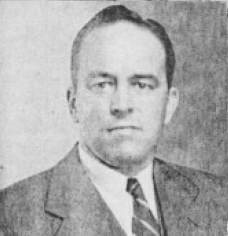 George A Hersam Jr was born in Stoneham,
Middlesex, Massachusetts, the son of George and Mable Hersam.
His father was a lawyer and in 1930, George Jr was working as a
Insurance Agent, the same as his brother Raymond. He enlisted in
the Air Corps reserve that Summer. Just a year later, the Air
Corps newsletter of July 1931 lists George A Hersam Jr of
Stoneham, Mass. as being among 98 cadets graduating as pilots
from the Advanced flying school at Kelly Field, Texas. His
posting to the 94th Pursuit Squadron was announced in the August
newsletter and in December 1931, the newsletter reported a close
call which 2/Lt Hersam survived. The Squadron was undertaking
long distance high altitude test flights to test new oxygen
equipment and the ability to move aircraft over long distance.
The newsletter reported the problem as follows:
George A Hersam Jr was born in Stoneham,
Middlesex, Massachusetts, the son of George and Mable Hersam.
His father was a lawyer and in 1930, George Jr was working as a
Insurance Agent, the same as his brother Raymond. He enlisted in
the Air Corps reserve that Summer. Just a year later, the Air
Corps newsletter of July 1931 lists George A Hersam Jr of
Stoneham, Mass. as being among 98 cadets graduating as pilots
from the Advanced flying school at Kelly Field, Texas. His
posting to the 94th Pursuit Squadron was announced in the August
newsletter and in December 1931, the newsletter reported a close
call which 2/Lt Hersam survived. The Squadron was undertaking
long distance high altitude test flights to test new oxygen
equipment and the ability to move aircraft over long distance.
The newsletter reported the problem as follows:
A short distance out of Washington,
members of the flight noticed the plane piloted by Lieut.
Hersam started cavorting crazily about the sky and then
div1ng for the earth. Down he plunged out of sight of the
remainder of the flight who, wondering, kept on towards
Washington. They were delighted, indeed, to have him join
the flight just before they landed. It was learned that
Lieut. Hersam had accidentally detached the tube leading
from his oxygen supply to his face mask while reaching for
his map, He was soon unconscious, and his plane, out of
control, dove towards the earth until at 7,000 feet the
pilot recovered and righted his ship. He joined the flight
over Washington, and the 12 planes landed as one unit at
Bolling Field, Anacostia, D.C., the first one touching the
ground at 3:50 p.m. [AFHSO website]
In December 1933 however he appears to have had a crash in which
he suffered serious injuries. The crash took place in
Florida.
By the time of the 1940 census, George appears to be staying in a Chicago hotel with an occupation of Air line pilot. In his college alumni magazine, 'The Tomahawk of Alpha Sigma Phi' in 1939, he reported that he was flying New York to Chicago with American Airlines. In the December 1941 magazine he reported to his Alumni group:
"Capt. George Hersam, commercial air
line pilot, isn’t riding the air lanes out of Chicago and
Washington any more. He writes from Montreal that “I have
been rather busy on this new job which is on the
transAtlantic ferry of new airplanes to Great Britain. I
spend more time in the United Kingdom, than in Canada, and
whenever I can get a few days off drive down to the States
for a short visit. If I am on this side I plan to attend the
Harvard and/or Yale and/or Princeton games. I am due out
this afternoon or tomorrow, weather and the vagaries of this
‘war operated’ service permitting and should be in England
about fifteen hours after departure from here if all goes as
scheduled. Return trips are even more indefinitely arranged
than delivery trips and I have awaited them in G. B. as long
as two weeks and some unlucky ones have waited as much as
four weeks before returning. I have been up here on this
work since early June and plan, if all goes as well as it
has to date, to stay here for the duration or until feel I
can be of more use elsewhere. The work is very interesting
and as deliveries
start for other parts of the Empire (Africa,India, or
Singapore) I might go on those other routes but expect to
stay here for quite a while.”
This follows through to his appearance on the cards of RAF
Ferry Command in July and August 1941 when he delivers three
Hudson bombers across the Atlantic, returning each time by the
ATFERO Return ferry service on board a Liberator transport. The
'Who's Who in Aviation' published in 1942 describes him as
being: Capt. Amer. Airlines Inc. since
1936; engaged on leave from Amer. Airlines Inc. in ferrying
new airplanes across Atlantic Ocean from Canada to England
since June 1941.
One year later
and days after the landing in Ireland, he again appeared
in the alumni magazine, reporting: The first
Christmas card of the season, proudly received for the
Class, came from the Royal Air Force Ferry Command, from
George Hersam, whose enclosed letter reads: "I got back
yesterday and start out again tomorrow. This I expect is
only a routine trip to the tight little Isle but other trips
these last few months have included points in South America,
Africa and way stops enroute to and from England. Exact
itineraries would be of interest to the censor as well as to
you so I can only be extremely vague. But the new
hemispheres I have seen are very interesting and I can
recommend them to you when, after the war, you might wish to
travel. However, I can say that scenery in Greeland is so
uninteresting that I shouldn't wish to return and don't feel
anyone would wish to visit that Icebox winter or summer. I
am still, of course, at the same job but it now involves
travel to any spot on the globe where our 'merchandise' is
needed or useful and seems to be an ideal way of touring at
Government expense though our stops are short and side trips
to points of interest are curtailed. I have, however, seen
the Sphinx and Pyramids, Africa's largest negro city, and
the original of the Prudential Life insurance
advertisements. Since I probably won't write again before
Christmas I am enclosing a Christmas card. Greetings to your
family and to any 1929 men you may chance to see."
MERRY CHRISTMAS
He continued flying with the RAF Ferry Command and 45
Group which took over operations later in 1944. He records
credit him with delivering at least 31 aircraft around the world
including to South Africa and Egypt. The aircraft were a mixed
bag of wartime multi engined aircraft including, Hudsons,
Liberators, Catalinas, a Mosquito, Coronado, Mariner and Dakota.
The Vermont based, Newport Daily Express recorded on 15 July
1944, that Capt. George Hersam along with Flight Engineer and
Mrs Woodard had stayed with friends in in Newport. The Woodard
is expected to be the Charles Oakley Woodard who arrived in
Ireland on Catalina
JZ330 in March 1944.
The Vermont Journal of 4 Jan 1945 mentioned George in the
following visit:
"Capt. George A Hersam Jr., of the
R.A.F. Transport Command, spent the Christmas Holiday at the
home of Miss Blancha Daniels. Capt. Hersam has
recently been awarded a citation from King George VI for
outstanding service. Following his visit here, Capt,
Hersam has returned to his base in Bermuda."
By Dec 1937 newspapers report he is an aviator with American
Air Lines. He is mentioned in a 1946 Tennessee newspaper
as being a pilot with Trans Air Inc. and flying through
Nashville airport. The 1958 magazine 'Skyways for Buiness'
reported that a George Hersam was chief pilot at Cornell
Dubilier Electric Corp. and flying a DC-3.
George passed away in Dade, Florida aged 69 in February 1978.
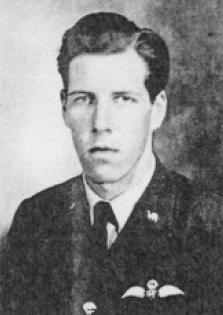 Alistair Scott Buchanan hailed
from Glasgow and was born in 1922 to Georgina and William Scott
Buchanan. He was commissioned as an officer in the RAF in March
1943 having commenced service with Ferry Command in September
1942. His records show him having been co-pilot on five Catalina
deliveries before taking command of another three deliveries of
the famous flying boat. These eight aircraft took place over a
sixteen month period, the gaps between been filled by slow
journeys by boat, train and aircraft back to Canada.
Alistair Scott Buchanan hailed
from Glasgow and was born in 1922 to Georgina and William Scott
Buchanan. He was commissioned as an officer in the RAF in March
1943 having commenced service with Ferry Command in September
1942. His records show him having been co-pilot on five Catalina
deliveries before taking command of another three deliveries of
the famous flying boat. These eight aircraft took place over a
sixteen month period, the gaps between been filled by slow
journeys by boat, train and aircraft back to Canada.
Alistair married in Canada in November 1945, to Joy Woodferne
Lawrence of Mont Royal, Montreal. He remained an RAF
officer until the summer of 1946 when the London Gazette
recorded his commission being relinquished due to medical
unfitness for service. It is not known what this related
to.
Sadly, he was to loose his life in a car racing accident in
1953, as recorded by the The Autocar magazine: "ALISTAIR BUCHANAN, the third member of the
crew of Sunbeam-Talbot 131, who was tragically killed when
the car was involved in an an accident near Liege during the
Monte Carlo Rally, was a keen Scottish motor sporting
enthusiast, and will be sadly missed by his many friends
over the Border. He served during the war as a pilot with
Ferry Command. His wife and three children have my deepest
sympathy.".
Alistair's daughters were so very kind as to provide the photos
and newspaper cuttings shown on this page.
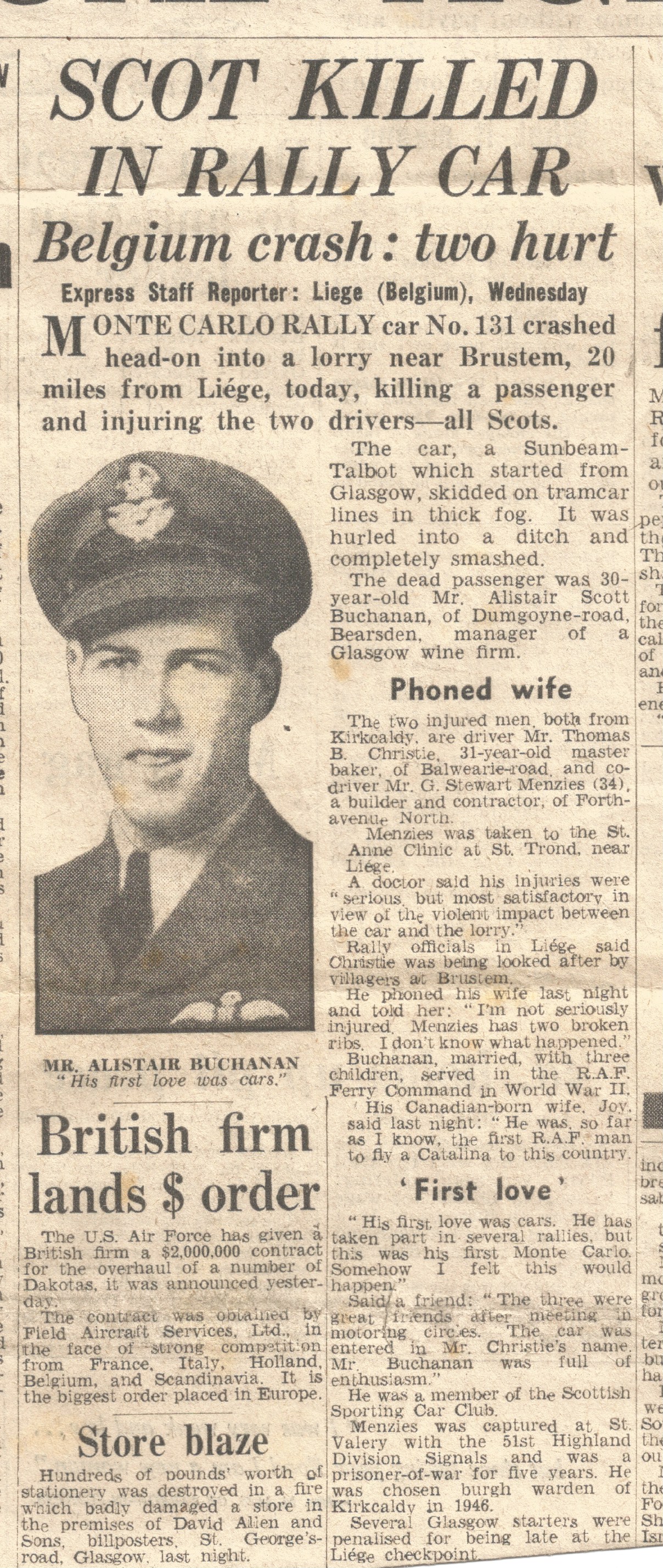
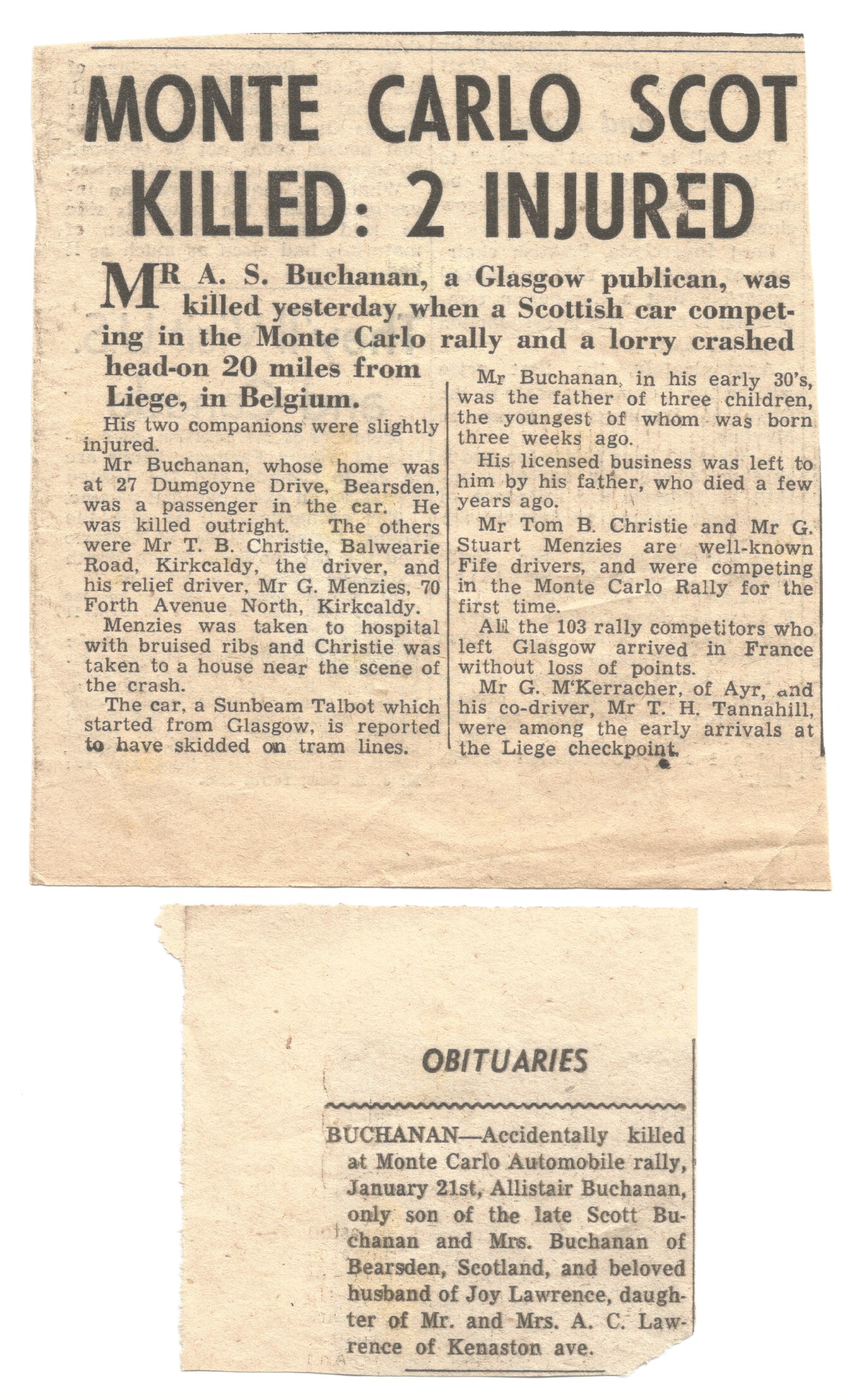
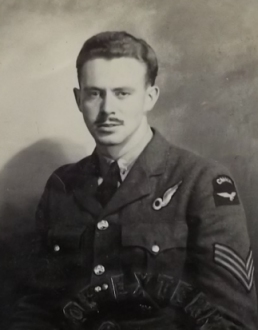 William
Grant Cantlay was born in February 1912 in Toronto to
Gladys Mary and William Cantlay, both of whom had been born in
Scotland. He was working as a clerk with the Loblaw
Groceterias Company in Toronto at the time he enlisted in August
1940. He was also studying a scholarship in Commercial Art
at the Federal Art School. He was very involved with
rowing in Canadian Henley Regatta.
William
Grant Cantlay was born in February 1912 in Toronto to
Gladys Mary and William Cantlay, both of whom had been born in
Scotland. He was working as a clerk with the Loblaw
Groceterias Company in Toronto at the time he enlisted in August
1940. He was also studying a scholarship in Commercial Art
at the Federal Art School. He was very involved with
rowing in Canadian Henley Regatta.
His training brought him from 20 EFTS in 1941 through, 16 SFTS,
8 AOS, 9 B&GS to the 1 ANS in Jun 1942. He had
originally been lined up for pilot training but, having been
deemed unsuitable as a pilot while at 16 SFTS, was put forward
as a navigator, or observer. His observer training being
carried out at the AOS, BGS and ANS.
He was commissioned as a pilot officer in July 1942. He
was classified as a Nav B (Spec) in October 1942. His
passport, contained in his RCAF service file, shows a stamp
dated November 4th, 1942, stating "Seen
at the passport office, Ottawa. Good for the journey
to Egypt."
Catalina FP273 is the first aircraft delivery listed on his Ferry Command card, and he continued on this duty for the next eighteen months. The Queen Elizabeth was his means of returning to Canada after the delivery, arriving in Halifax along with at least Buchanan on 10th December.
He is listed on 13 deliveries including a Catalina again,
serial number FP323, in January 1943. He arrived back in
Montreal on 29 January 1943 and has no posting out until late
March. The most of April was spent on a posting to 'N.B.'
and it was not until August 1943 that he was again involved in a
transatlantic ferry this time on Ventura FP580. This was
followed by eleven Baltimore and Marauder aircraft, all of which
were deliveries to Accra in Africa. His Ferry Command card
lists his final delivery as Marauder HD548 and states he was
killed in crash on 28-5-44. His service file however tells
a fuller picture.
The 3rd of June 1944 would find William scheduled to fly on a
delivery of a Marauder twin engine bomber out of Khartoum in
Sudan. He was crewed on that occasion with three other
Canadian men, and were in the process of delivering the aircraft
from Accra to Cairo. The aircraft, Marauder HD417 suffered
an engine failure on take off and while attempting to make a
belly landing 10 miles east of Khartoum, crashed killing at four
crew including William Cantlay. All four lie buried in
Khartoum War Cemetery.
The Flight Engineer on the aircraft had proven a little bit of
a mystery to determine the identity of. The archival
copies of the correspondence kept by the Irish Army and the
Department of Foreign affairs are, as mentioned above, of
particularly poor copy, this individuals name can be variously
read as Sgt P Barter RAF or P Darter RAF.
However, based on the testimony of Lt Owen Quinn, the Irish Army
officer who met the crew, who describes a crew member as being
Sgt Tony Baxter, it turned out that he was in fact F/Sgt Thomas
Anthony BAXTER 633692 who two years later and in similar
circumstances would find himself on another
stricken Catalina at the flying boat base at Foynes in
County Limerick.
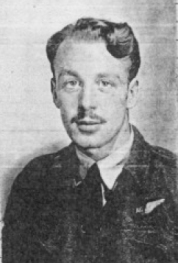 Sgt Baxter came
from Atherton near Manchester in England, born in September 1921
to Martha and ?? Baxter. He was a serving member of the RAF and
held the rank of Flight Sergeant. He had flown with Ferry
Command and 45 Group as early as August 1942 when he delivered
three Catalina’s overseas. The rest of his wartime deliveries
were on Liberators with some Catalina’s interspersed. He also
helped deliver two Canadian built Lancaster’s to the United
Kingdom, KB711 and KB755, during 1944. His name can be found on
the manifests of four aircraft arriving at New York during May,
June and July 1944. He was returning to North America having
been on ferry duties. He traveled to India during 1944 also.
Sgt Baxter came
from Atherton near Manchester in England, born in September 1921
to Martha and ?? Baxter. He was a serving member of the RAF and
held the rank of Flight Sergeant. He had flown with Ferry
Command and 45 Group as early as August 1942 when he delivered
three Catalina’s overseas. The rest of his wartime deliveries
were on Liberators with some Catalina’s interspersed. He also
helped deliver two Canadian built Lancaster’s to the United
Kingdom, KB711 and KB755, during 1944. His name can be found on
the manifests of four aircraft arriving at New York during May,
June and July 1944. He was returning to North America having
been on ferry duties. He traveled to India during 1944 also.
Thomas Baxter passed away in Taunton District in April 2006.
The two remaining men proved more elusive to identify and it is
understood they were civilian American employees or contractors
with RAF Ferry Command, the term 'US War Department' was used by
the Irish army in describing them. And both were recorded
as being Radio Operators.
One name was that of T J Howard but the other name is very
difficult to read from the reports, being both hand written and
typed, but only on carbon copies.
One of these men recorded above by Quinn as having the surname
Fuchs, the Irish Army report, while being difficult to read,
seems to give him the initial C. The DHH in Canada have no
records for any Ferry or Transport Command officer with that
surname or similar, and there is no likely candidate listed in
the Transat - Bulletin of Trans-oceanic Radio Officers
association published in October 1945.
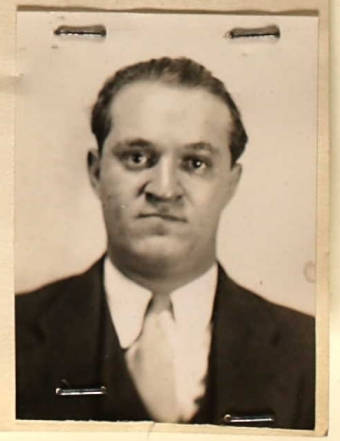 There is however one
American Radio Operator, Mr Philip Fuchs, born 1907 in Maryland,
who flew throughout the war with American Export Airlines (AEA),
making at least ten trips from Foynes, Limerick to New York
between July and November 1942. It is felt that he well
might be the mysterious Mr Fuchs from Catalina FP273.
There is however one
American Radio Operator, Mr Philip Fuchs, born 1907 in Maryland,
who flew throughout the war with American Export Airlines (AEA),
making at least ten trips from Foynes, Limerick to New York
between July and November 1942. It is felt that he well
might be the mysterious Mr Fuchs from Catalina FP273.
Before this period, he had served as a Radio Operator for a
number of years on ships. He was on AEA duty on a flight
returning from Foynes to New York on the 29th/30th November
1942.
It is thought that perhaps he was assigned for additional duty
from AEA to RAF Ferry Command at that time, but this is only a
guess.
He was registered for the draft in 1940, at which time he was
working for Moore McCormack Steamship Company and living with
his wife Christine in the Bronx, New York.
It might be the case that he was able to return to the US quick
enough to take a flight from New York or Botwood before the 29th
November.
He passed away in California in May 1979 and appears to have a
US Coast Guard veterans headstone.
The final crew member, also unconfirmed, is the Mr T J
Howard. Again the records of Ferry and Transport command
along with shipping records on genealogy websites throw very
little light on who this individual might be. He is not
mentioned in Quinn's post war account.
 A possible person was a
Thomas Jefferson Howard, born 1909 in Pennsylvania to
John and Ella Howard.
A possible person was a
Thomas Jefferson Howard, born 1909 in Pennsylvania to
John and Ella Howard.
He is found in the 1940 US census, resident in Melbourne,
Florida with his then wife, Gertrude Elizabeth, working as a
Radio Operator in civil aviation. He was a former US Navy
aviator but by October of that year, they were living in
San Diego when he registered for the draft. A photo of
this man on a family tree on ancestry.com shows him in a flying
suit with an RAF Ferry Command badge on the breast.
As a Pennsylvania resident, he submitted a veterans
compensation application which summarises his wartime
service. He enlisted back into the US Navy in
September 1943 and served with VR-11, Transport Squadron 11 from
December 1943 up until May 1945. At the time of
This man passed away on 17th February 1999 in Rio Rancho,
Sandoval, New Mexico. His obituary mentioned the English Royal Air Force as being
a service he flew with.
It is hoped that his family might be able to confirm is he was
on board FP273.
